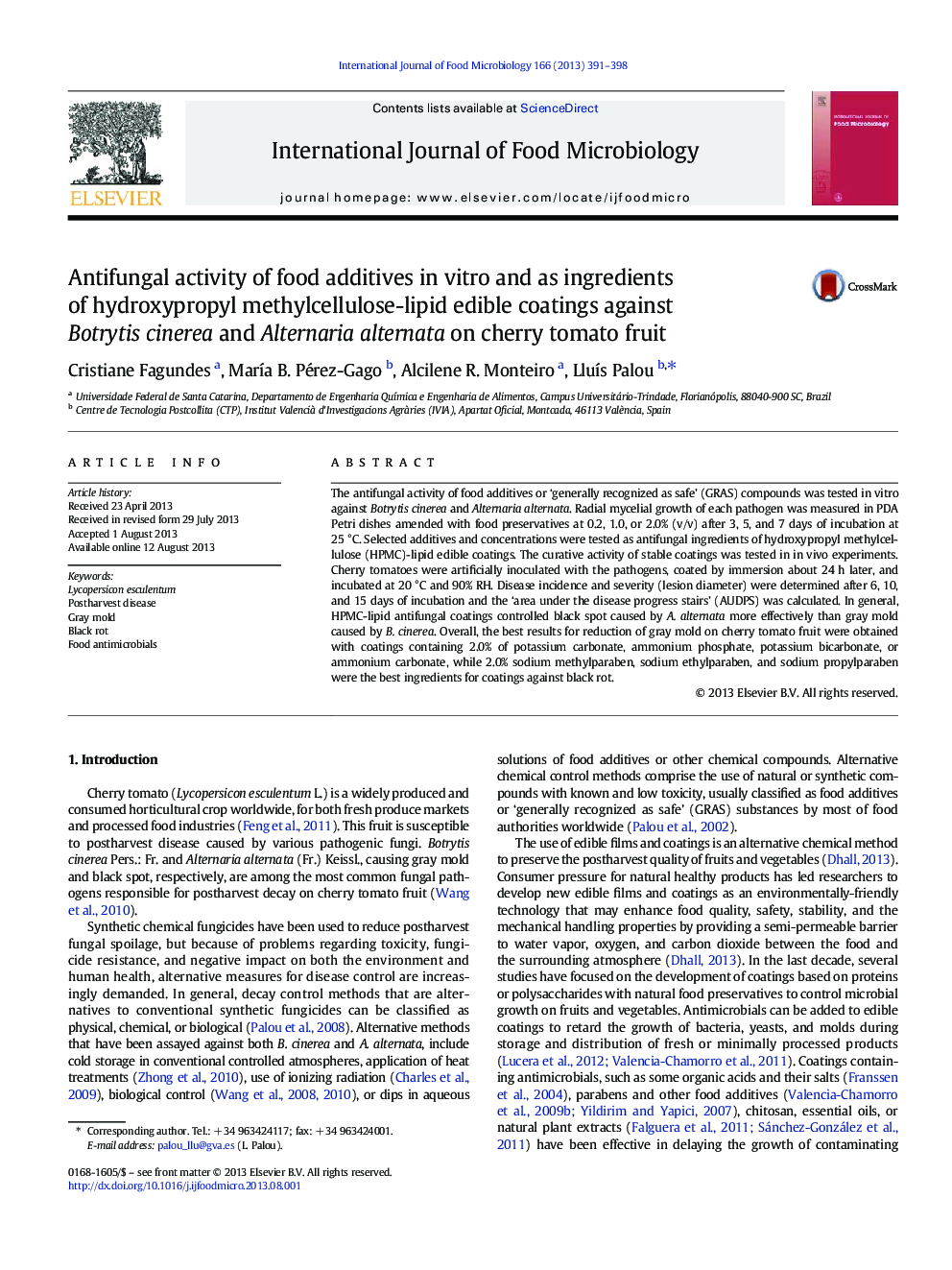| Article ID | Journal | Published Year | Pages | File Type |
|---|---|---|---|---|
| 6290230 | International Journal of Food Microbiology | 2013 | 8 Pages |
Abstract
The antifungal activity of food additives or 'generally recognized as safe' (GRAS) compounds was tested in vitro against Botrytis cinerea and Alternaria alternata. Radial mycelial growth of each pathogen was measured in PDA Petri dishes amended with food preservatives at 0.2, 1.0, or 2.0% (v/v) after 3, 5, and 7 days of incubation at 25 °C. Selected additives and concentrations were tested as antifungal ingredients of hydroxypropyl methylcellulose (HPMC)-lipid edible coatings. The curative activity of stable coatings was tested in in vivo experiments. Cherry tomatoes were artificially inoculated with the pathogens, coated by immersion about 24 h later, and incubated at 20 °C and 90% RH. Disease incidence and severity (lesion diameter) were determined after 6, 10, and 15 days of incubation and the 'area under the disease progress stairs' (AUDPS) was calculated. In general, HPMC-lipid antifungal coatings controlled black spot caused by A. alternata more effectively than gray mold caused by B. cinerea. Overall, the best results for reduction of gray mold on cherry tomato fruit were obtained with coatings containing 2.0% of potassium carbonate, ammonium phosphate, potassium bicarbonate, or ammonium carbonate, while 2.0% sodium methylparaben, sodium ethylparaben, and sodium propylparaben were the best ingredients for coatings against black rot.
Related Topics
Life Sciences
Agricultural and Biological Sciences
Food Science
Authors
Cristiane Fagundes, MarÃa B. Pérez-Gago, Alcilene R. Monteiro, LluÃs Palou,
